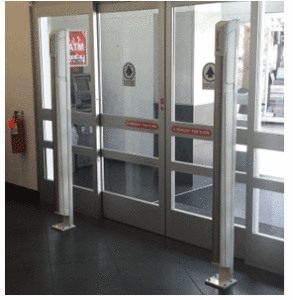 For decades the gold standard of learning theory was that people needed to be told something 3 times before they really understood and remembered it. If you wanted people to learn something you were supposed to: tell them what you’re going to tell them, then tell them, then tell them what you just told them.
For decades the gold standard of learning theory was that people needed to be told something 3 times before they really understood and remembered it. If you wanted people to learn something you were supposed to: tell them what you’re going to tell them, then tell them, then tell them what you just told them.
Not anymore. People’s attention spans and retention abilities have dramatically decreased over the last 10 – 15 years. Depending on the research it’s now believed the average person needs to hear something 5 – 7 times before he understands and remembers it.
This new standard in learning has changed the way effective businesses conduct their training. Training modules are shorter and on-going, which gives employees the chance to retain and integrate the material.
The new normal is particularly important in retail. Well-trained employees are still one of the best ways to prevent shoplifting. Therefore, a successful store will combine new training methods with fundamental shoplifting prevention techniques.
Pay attention at all times
Distracted employees are a real problem in retail and it’s getting worse. Training includes, but isn’t limited to: the store’s policy on cell phone use, avoidance of personal on-the-floor conversations, proper customer service, common shoplifting tactics, and how to handle “lingering” customers.
Greet and be attentive to every customer
Friendly, conscientious employees are a natural deterrent to shoplifters. Impulse or thrill thieves are less likely to act and professional ones are more likely to go somewhere else where the employees are less diligent.
Monitor the high risk areas/merchandise
Ongoing reminders of at-risk areas are useful. When people get familiar with their environment they don’t “see” it any more. The dark area in the corner gets ignored because they stop seeing it as a prime shoplifting site.
Some items will always be a target for theft, while others are just the most recent trend. It makes employees’ jobs easier if they know that pink T-shirts are now disappearing, rather than the blue ones that were 3 months ago.
A solid, basic training program which provides a solid, basic education to employees is still the most effective way to prevent shoplifting. An additional bonus is, when done correctly, it can increase morale and employee buy-in.
Nicole Abbott is a professional writer who’s had over 200 articles published. She’s a business consultant and former psycho-therapist with over 20 years of experience in mental health, business and addiction. She’s a coach, lecturer, trainer and facilitator. She has conducted over 200 workshops, trainings, presentations, seminars and college classes.

 According to the
According to the 
 Is your burglar alarm giving you all it’s got? Technology keeps updating but there is one area you may not be thinking about getting more from your dollar: your burglar alarm system.
Is your burglar alarm giving you all it’s got? Technology keeps updating but there is one area you may not be thinking about getting more from your dollar: your burglar alarm system. My grandparents owned a small hardware store back in the late 1950s. Back then, when my grandpa left at 5pm, he simply locked the back door, gathered his belongings and left, locking the double glass front door behind him with nothing more than a standard lock that you’d find on any home at the time. The front of the store was nothing but glass. He had cash and at least $100k worth of merchandise on the shelves. Wouldn’t it be nice if things could go back to the way they were back then? Could you imagine if you left your store this soft nowadays? Burglaries happen, and they happen often. Over the past ten years as a Regional LP manager for my company, I’ve had it happen a total of 12 times. About once a year, or so, someone, somewhere across my region, breaks into one of my stores; or at least tries to do so. We have a lot of things that we implement to prevent this from happening, so when someone is able to breach our perimeter, it’s usually caused by human error.
My grandparents owned a small hardware store back in the late 1950s. Back then, when my grandpa left at 5pm, he simply locked the back door, gathered his belongings and left, locking the double glass front door behind him with nothing more than a standard lock that you’d find on any home at the time. The front of the store was nothing but glass. He had cash and at least $100k worth of merchandise on the shelves. Wouldn’t it be nice if things could go back to the way they were back then? Could you imagine if you left your store this soft nowadays? Burglaries happen, and they happen often. Over the past ten years as a Regional LP manager for my company, I’ve had it happen a total of 12 times. About once a year, or so, someone, somewhere across my region, breaks into one of my stores; or at least tries to do so. We have a lot of things that we implement to prevent this from happening, so when someone is able to breach our perimeter, it’s usually caused by human error. It was 4:30am on a Tuesday morning. My company cell phone pierced through the quiet halls of my house. At first, I didn’t get out of bed; perhaps it was a wrong number. Silence. As I doze back off, I hear the familiar tone once again. Who could be calling me and for what reason at this hour? I let it ring. I hear the chirp of the voicemail. Before I can muster the energy to get out of bed, I hear my personal phone ringing. This one is next to me on the night stand. Something is wrong, I immediately think to myself. When I reach for my phone in the middle of the dark room, eyes still blurry, I see the caller ID. It’s a sheriff’s deputy that I’m good friends with. My heart is in my throat as I answer. “You’re morning crew was just robbed at gunpoint. Get to the store now.”
It was 4:30am on a Tuesday morning. My company cell phone pierced through the quiet halls of my house. At first, I didn’t get out of bed; perhaps it was a wrong number. Silence. As I doze back off, I hear the familiar tone once again. Who could be calling me and for what reason at this hour? I let it ring. I hear the chirp of the voicemail. Before I can muster the energy to get out of bed, I hear my personal phone ringing. This one is next to me on the night stand. Something is wrong, I immediately think to myself. When I reach for my phone in the middle of the dark room, eyes still blurry, I see the caller ID. It’s a sheriff’s deputy that I’m good friends with. My heart is in my throat as I answer. “You’re morning crew was just robbed at gunpoint. Get to the store now.”

